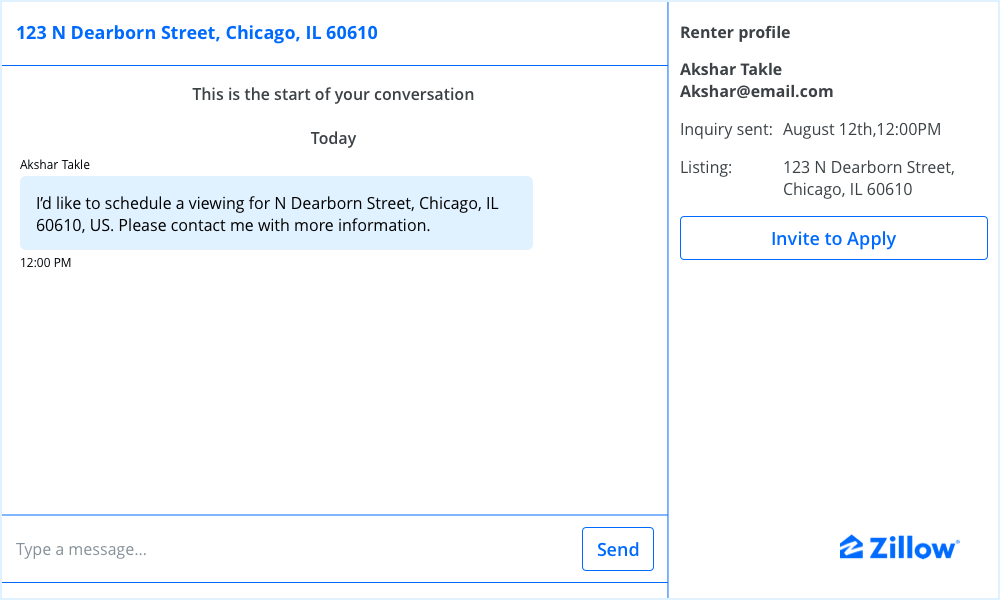
OneSite, a property management software provider, has been around twenty years. Other than its own proprietary systems OneSite also works with other vendors. OneSite Facilities Plus is its most popular version, and it was designed by RealPage. For those of you whose apprehension is based on cost, OneSite has a lease management solution that is both affordable and easy to use.
OneSite is the right choice for property managers who are looking for a new platform. The company offers many options but the main product OneSite Facilities Plus from RealPage was created specifically for property managers and maintenance professionals. OneSite is a top-of the-line property management tool. It offers a wide range of benefits and features. OneSite's solutions are ideal for boosting your bottom line. They can do everything, from tenant screening and leasing to maintaining and improving property appearance.
There are some limitations to the software. Although setting up OneSite accounts is simple, supporting and maintaining it is not as easy. The company doesn't offer any support to users. That means users won't be able to expect to receive the same level of customer service as a sales rep. The interface is also problematic, which is not surprising given the software's age.
OneSite, despite its weaknesses, has one advantage over its competitors: it offers one of the most flexible property-management solutions on the market. OneSite is able to be customized to suit the needs of managers and property owners of any size, unlike other property management software providers. This applies to all property management operations, large or small. Software comes with a solid guarantee and includes a wide range of property management tools.

Lastly, OneSite has a few other tidbits of information. These include the easiest way to manage documents and features that help you keep track of your tenants. Among the more interesting tidbits are a comprehensive suite of community tools, such as a robust online community directory and the ability to manage community activities. OneSite not only allows you to store a lot of community-relevant information but also lets you connect with your peers and colleagues in real-time.
FAQ
How often should I hire a handyman?
It depends on the nature and scope of your project. One handyman might be enough to do a basic job like changing a bulb or fixing a leak. If there are many remodeling tasks involved, however, you might need several handymen.
Is there anything I should look out for before hiring a handyman?
You will want to make sure you hire someone who has experience with your type of project. It is also a good idea to ask for references and inquire about past customers. You might also consider adding some additional money to cover unexpected expenses. You'll also want to ensure that he is licensed and insured.
Are handymen insured?
Yes! Yes. Many insurance companies cover liability claims that exceed $1 million for bodily injuries and property damage. This means that if something goes wrong during the course of the project, your insurance company will generally compensate you for the damages caused.
What can a handyman do to fix my leaky faucets
A handyman can probably handle minor repairs but will not have the training required to perform major projects, such as rewiring a house or installing custom cabinetry. A handyman can do minor home improvements, but there are no limitations to his abilities.
What is the best time to hire a handyman for your project?
There is no "right time" to hire a handyman. You should get started as soon you can. You could save some money by waiting until after holidays. You could also pick up the telephone and call various handymen.
How long does it take for a handyman complete a project.
It depends on the project's size. The time it takes to finish smaller projects is more common than larger ones. The average handyman will finish any size project within one week.
Which is easier: contracting or being a handyman?
A handyman does not require as much resources as contracting. You only need to have your tools. While contractors often rely on subcontractors, handymen must be able and willing to manage their own work schedules.
Statistics
- More than 20% of homes in America have outdoor living spaces, including decks and patios. (mrhandyman.com)
- Mila keeps a commission of 20% for each completed service performed by Friends and charges various service fees regarding work done by Pros. (appjobs.com)
- With a strong housing market, the handyman and general maintenance worker industry are expected to grow by nearly 10% in the next decade. (housecallpro.com)
- Our handyman services for seniors are provided by professional senior helpers who have been serving the community for over 20 years with 98% customer satisfaction. (cantatahomeservices.org)
- “Once the pandemic hit, that number fell to about 20%.” (inquirer.com)
External Links
How To
How to Replace a Broken Tile
Step 1 – Remove the tiles.
The tiles should be removed from the flooring and placed aside. These tiles will be useful later on, so you'll need to keep them intact. Note which pieces are missing or damaged to avoid having to search for replacements.
Step 2 – Choose New Tiles
You can take a look at the different options for tile replacement.
-
You should find a similar tile to the one that you've just taken out.
-
To find the right piece, take the measurements you took as you were removing the tiles. This will allow you to quickly find the right size, without having to measure again.
-
Be open to different colors, patterns or textures.
-
Consider what grout you prefer to use. Some people prefer to use a single color, while others love mixing it up.
-
You should ensure that the tile you choose is resistant to moisture.
-
Finally, consider the placement of your new tile -- you can save time and money by ensuring the area you're installing it in has enough space for proper installation.
-
Once you've chosen your tile, order it online or call your local Lowe's store to place your order.
Step 3 - Install the new tiles.
For your new tiles, use the same method that you used to install them. It's important to align them correctly in order for them to fit together.
Step 4 - Clean up
Be sure to vacuum up all crumbs and debris before applying the last layer.
This will keep dust and dirt from getting into the grout between tiles, which could lead to mold.
Step 5 - Sand the Floor
After you have cleaned everything, sand the floor to remove any particles that were left from the previous step.
Step 6 - Close the door
After the floor has been smoothed, you can apply protective coatings to the tiles. Wait until the floor is completely smooth before applying the protective coatings to the tiles. Wet paint could stain the tiles' surface.
For stain protection, you can always use a product called "damp&dry" to clean your floors.
But it won't address every issue that might arise after installing your new tiles. If you have children, an anti-slip coating may be a good idea.
Finally, do not forget to keep the protective sealer on for several more weeks before you move back into your home.